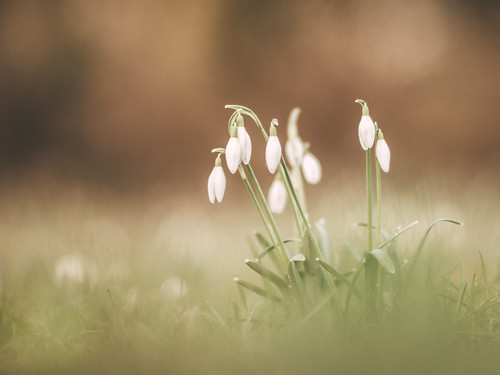by Amy McMillan

Ever had that feeling of panic as you lie in bed and realise the clock says 3am? You’re STILL AWAKE and you have to be up in 4 hours. You’re going to be exhausted tomorrow. How will you get through the day? What if it happens tomorrow night? What’s wrong with you? Is your brain broken?! Your partner is sleeping like a log, reminding you of all that you’re missing out on. The mind goes into overdrive, adrenaline surges through the body, and you’re plunged into the vicious circle of insomnia.
If you can relate to this, you’re not alone. Most of us occasionally suffer from sleep problems, and many of us suffer chronically, usually due to the momentum of our busy minds. According to the Sleep Council, almost a third of us (30%) are getting a poor sleep most nights[i].
But this is not an article which promises to ‘fix’ your insomnia, nor is it an article about ‘sleep hygiene’ (click here for useful info on improving your bedtime wind-down routine). This article will not focus on warm baths or avoiding caffeine in the evenings – although these can be very helpful suggestions. This is for those who have experienced chronic sleeplessness, those who’ve tried everything and those who sigh inwardly at the well-meaning advice about lavender pillows and warm milk. Here, we’ll dive into the frustrating experience of insomnia and how mindfulness can help us to change our attitude to sleeplessness, even though we may still be sensitive sleepers.
Sleep problems are usually caused by an overloaded mind that won’t shut down, even though we want it to*. The more we fight with it, the more active it becomes and the more frustrated we become. The Buddha referred to the two arrows of suffering; the first arrow refers to the unavoidable pain of a situation, but the second arrow describes the mental suffering we bring to the situation. This is a good analogy when describing the vicious cycle of sleeplessness. The first arrow is the fact that we’re not asleep – this is the reality of the moment; it is as it is. However, insomnia really gets going when our thinking mind fires the second arrow and we move into suffering; ruminating, catastrophising and creating a cycle of frustration which escalates the situation and triggers the body’s fight or flight response. We find ourselves getting more and more tangled in our thoughts and the possibility of sleep recedes as the dawn grows closer.
 Sleep has always been my weak spot. Largely, I sleep very well but occasionally, I’ll have a night of virtually no sleep at all, whipping myself into a frenzy of frustration when I’m still awake at 6am and have to get up shortly with my two children. At certain points in my life, it has become a chronic problem where the bad nights have outweighed the good. Sometimes it has become debilitating and I’ve needed medication to help to break the cycle. Depression has been famously called The Black Dog but my metaphor for insomnia would be an angry cat; prowling restlessly, sharp claws ready to strike just as I begin to drift off. Sometimes it is huge, monstrous and torments me by sitting on my chest, filling me with tension and dread. It can drive me to what feels like the brink of madness; it’s no surprise that sleep deprivation is used as a form of torture.
Sleep has always been my weak spot. Largely, I sleep very well but occasionally, I’ll have a night of virtually no sleep at all, whipping myself into a frenzy of frustration when I’m still awake at 6am and have to get up shortly with my two children. At certain points in my life, it has become a chronic problem where the bad nights have outweighed the good. Sometimes it has become debilitating and I’ve needed medication to help to break the cycle. Depression has been famously called The Black Dog but my metaphor for insomnia would be an angry cat; prowling restlessly, sharp claws ready to strike just as I begin to drift off. Sometimes it is huge, monstrous and torments me by sitting on my chest, filling me with tension and dread. It can drive me to what feels like the brink of madness; it’s no surprise that sleep deprivation is used as a form of torture.
However, my regular mindfulness practice has been transformational in helping me to change my attitude towards sleep (and so many other things) It supports me in two ways; firstly by keeping me balanced during the day, and secondly by supporting me at night if I have trouble falling asleep.
Daily Mindfulness
Practicing mindfulness on a daily basis creates space in my mind and protects me from mental overload. Improving sleep has to start during the day; having a bath to wind down at bedtime doesn’t work if I’ve had a stressful day as my mind has too much momentum to simply switch off. One of the most useful techniques I’ve found is to take mindful pauses as often as possible during the day. This is a very short and simple way to break the mind’s momentum, but it needs to be practiced regularly. There are many different ways of pausing mindfully, and you can explore different ways of anchoring yourself in the present moment. Some people like to take a minute to sit and feel the breath. Others like to tune in to sounds around them or pick a particular part of the body to sense into. As I’m a busy-minded person, I find that grounding myself by sensing my feet on the floor and my weight dropping down is the quickest way out of my head. I also take a brief, mindful pause whenever I hear a bird singing, using the sound to bring me out of the chatter and back into the moment.
I pause several times a day, whenever I feel the momentum of the mind getting strong. You might like to explore different anchors and different ways of reminding yourself to pause; maybe while boiling the kettle, before getting into the car, or before stepping into a meeting. The great thing about pausing mindfully is that it may only take 30 seconds at a time and, if you do it with your eyes open, no one will even notice. I also have a daily sitting practice which really helps to break the mental momentum. My practice varies, but it always starts and ends with grounding and feeling the weight dropping down.
Mindfulness at Night
 If I’ve had a mindful day, I’ve usually cultivated the conditions for a good night’s sleep. However, if the mind is still whirring when I turn out the light, I anchor myself by observing the body and breath, feeling the weight of the body dropping down through the bed. I practice observing the thoughts passing through, attempting not to get hooked into the stories. This is still a work in progress. I find that practicing mindfulness when in the ‘tired but wired’ state is challenging as it’s hard to stay alert enough to observe the mind but, at the same time, I’m too alert to sleep. I try to practice acceptance; I can’t fight sleeplessness or ‘fix’ it – attempting to switch my brain off only creates more frustration. I remind myself that ‘this too shall pass’ and focus on resting instead of sleeping. I try not to get into the vicious cycle of catastrophising about the next day. These thoughts still pop up, but I repeatedly come back to sensing the body, rather than letting thoughts run wild, becoming an added layer of suffering.
If I’ve had a mindful day, I’ve usually cultivated the conditions for a good night’s sleep. However, if the mind is still whirring when I turn out the light, I anchor myself by observing the body and breath, feeling the weight of the body dropping down through the bed. I practice observing the thoughts passing through, attempting not to get hooked into the stories. This is still a work in progress. I find that practicing mindfulness when in the ‘tired but wired’ state is challenging as it’s hard to stay alert enough to observe the mind but, at the same time, I’m too alert to sleep. I try to practice acceptance; I can’t fight sleeplessness or ‘fix’ it – attempting to switch my brain off only creates more frustration. I remind myself that ‘this too shall pass’ and focus on resting instead of sleeping. I try not to get into the vicious cycle of catastrophising about the next day. These thoughts still pop up, but I repeatedly come back to sensing the body, rather than letting thoughts run wild, becoming an added layer of suffering.
I’ve learned to treat myself with kindness and patience, speaking soothingly to myself as I do with my children when they can’t sleep. I remind myself that we have a tendency to focus on the negative and, invariably, things seem worse at night. I reassure myself that I’ve survived many days with virtually no sleep. I remind myself that despite sleeplessness feeling very isolating, it is actually a universal experience. I’ve read that when Archbishop Desmond Tutu can’t sleep, he thinks of all of the fellow insomnia sufferers lying awake across the world. Sometimes I listen to a calming audio book (Stillness Speaks by Eckhart Tolle is a favourite.) I also place the clock where I can’t see it as it’s guaranteed to trigger the cascade of ‘second arrow’ thoughts. If I find myself very caught up in my mind, and getting increasingly frustrated, I get up. I find it hard to sit and meditate at night but reading or doing some mindful gentle yoga can help to ground me.
I usually sleep well these days, if I’ve maintained my mindful practice during the day. Sometimes I still find myself sleepless and frustrated but I trust that I’ll drop off eventually. I’m also sometimes surprised to find myself coming to a place of acceptance where I can actually enjoy resting in the peace and quiet with the family asleep and no one needing anything from me. I may always be a sensitive sleeper but bringing mindfulness practice into my daily life is slowly helping me to shrink the angry cat of insomnia into a small, friendly kitten.
*Sleep problems can also be caused by nutritional deficiencies, hormonal issues & medical conditions so it is worth getting these checked out as a starting point.
[i] The Great British Bedtime Report 2017, The Sleep Council (www.sleepcouncil.org.uk)
Amy McMillan is a mindfulness & yoga teacher, mum and ex-primary school teacher. She has first-hand experience of the power of mindfulness & yoga to calm anxiety & enhance well-being. She has a well-established daily meditation practice and she combines teaching mindfulness and yoga to help others find balance in their lives. Find out more at breathecalm.org or follow her on Facebook or Twitter.
Latest posts by Admin (see all)
- Poetry as Mindfulness - January 15, 2021
- How Mindfulness Stopped Me From Over-thinking My Life - December 12, 2020
- Give The Gift Of Compassion This Holiday Season With Co-Mindfulness - December 7, 2020